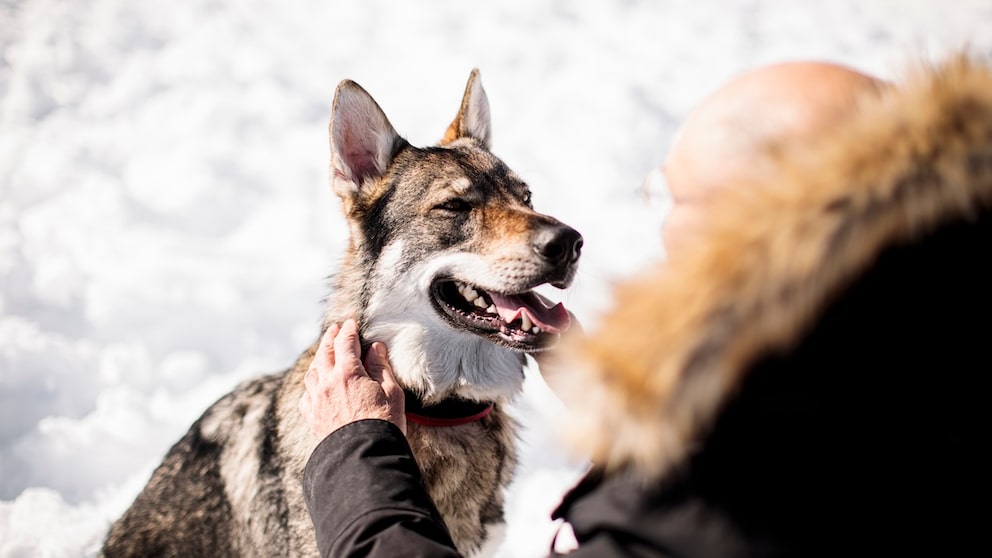February 18, 2025, 9:07 am | Read time: 4 minutes
Many people know that the domestication of the wolf took place in the Neolithic period. The common assumption is that humans chose the friendliest wolves and began to breed them. But what if it was the other way around? What if the friendliest wolves turned themselves into dogs much earlier? A study is testing this hypothesis.
Humans realized early on in their evolutionary history that there were advantages to domesticating horses and cows, as well as dogs and cats. Some provided a secure food supply and transportation. Others defended the house and farm or ate the mice before they got to the grain. However, there seems to be evidence not only in cats but also in dogs that this process was not initiated by humans but by the animal itself. A study shows that the wolves would have had more than enough time to turn themselves into dogs.
Active or Passive – How Did the Wolf Become a Dog?
For decades, there has been debate about how exactly the domestication of the dog began. Indeed, numerous archaeological finds suggest that early forms of dogs have been companions to humans for at least 30,000 years and possibly even up to 40,000 years. But how did man come to the wolf — or the other way around: did the wolf perhaps actively come to man?
While there is clear evidence of artificial selection by humans for the more recent domestication period, which began around 15,000 years ago, the origin of prehistoric dogs that existed before that remains a mystery. The theory that wolves themselves initiated the process of domestication rather than humans was, until now, considered unlikely.
A study has now used an agent-based model (ABM) to investigate whether it would have been possible for dogs to have evolved from wolves through natural and sexual selection alone — and whether this evolution would have been possible in a comparatively short period of time.
Model Calculations Show Whether Wolves Turned Themselves into Dogs
To do this, it was necessary to calculate which environmental conditions had to prevail in order to achieve an evolutionary split of wolf groups. This was done through analyses based on the natural selection of animals with high tolerance for humans and those with low tolerance.
Possible selection mechanisms that were taken into account were
- Food access: tolerant wolves have potentially better access to human food sources
- Mate choice: Female wolves specifically select mates with similar human tolerance because it is an evolutionary advantage for them.
This agent-based model is well suited to simulate interactions of wolves with environmental conditions and the influence of individual behaviors.
Using these parameters, the researchers carried out some model calculations and came up with some exciting results:
- With mate choice (“sexual selection”), evolutionary segregation occurred in 74.2 percent of the simulations.
- Without active selection, no separation occurred.
- The separation occurred on average after around 8030 years and lasted for around 3425 years.
- A high proportion of human food favored the evolution of dog-like animals.

Toxic Love Blue-Striped Octopuses Poison Partners to Prevent Them from Being Eaten During Sex

Study Shows Cockatoos Season Their Pasta with Vegan Blueberry Yogurt

Growing population More and more lynx are living in the Harz Mountains – what does that mean for people?
Did Female Wolves Identify Humans as Useful?
Based on these variables alone, the researchers were able to demonstrate that wolves had sufficient time to undergo the transformation into dogs on their own. The decisive factor was sexual selection. Should female wolves have selected mates that were tolerant and friendly towards humans, it would have been mathematically plausible for wolves to self-domesticate.
At the same time, the researchers investigated the effect of increasing the proportion of human food over time. In other words, when more and more animals were fed and, thus, benefited from the presence of humans. It is reasonable to surmise that this mutualistic process was advantageous for both humans and wolves, thereby becoming an evolutionary factor exerting selection pressure.
Conversely, the model calculations indicated that if Stone Age humans provided only a minimal or consistent amount of food for the wolves, no divergence between dogs and wolves occurred. This would contradict the hypothesis of self-domestication.
The hypothesis must, therefore, be investigated further. Possible dominance structures in packs and factors such as climate change or competition with other predators were also not taken into account in these model calculations.1

